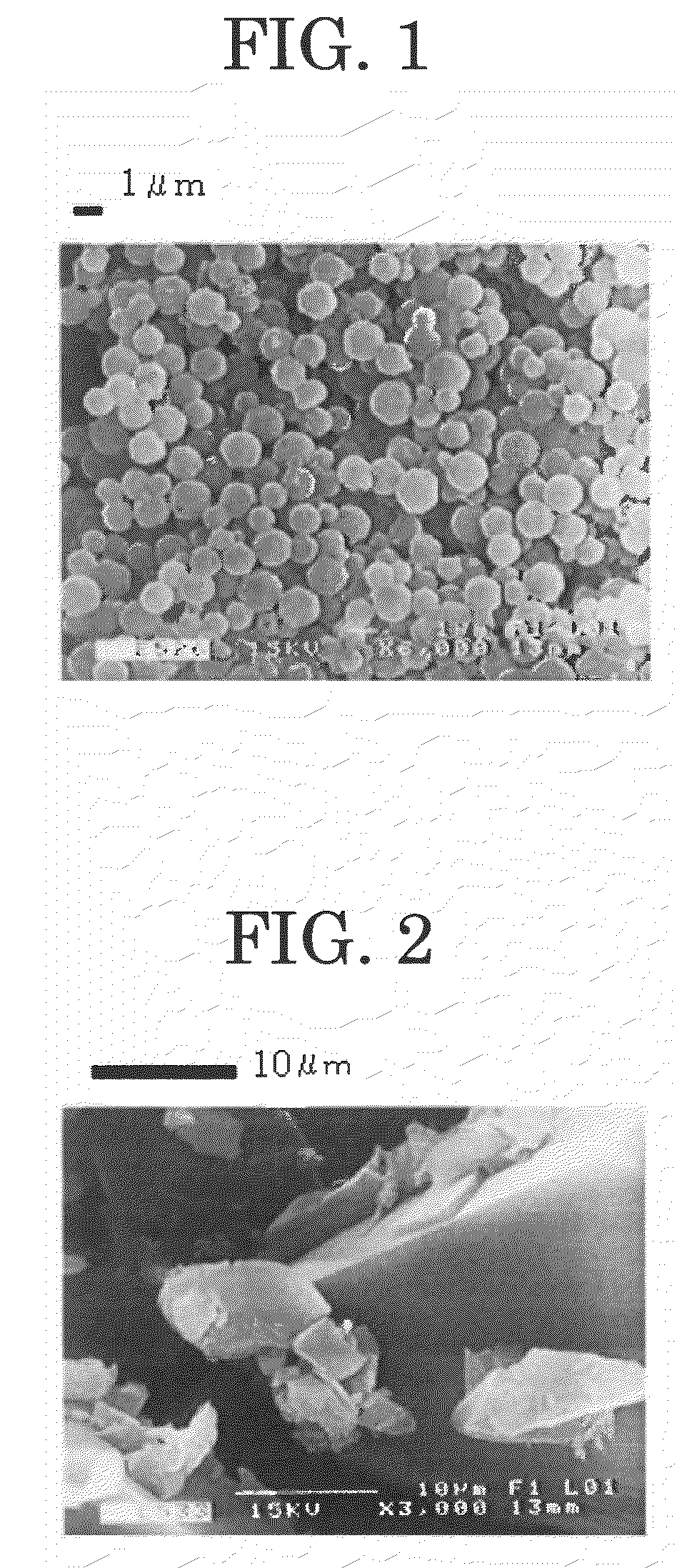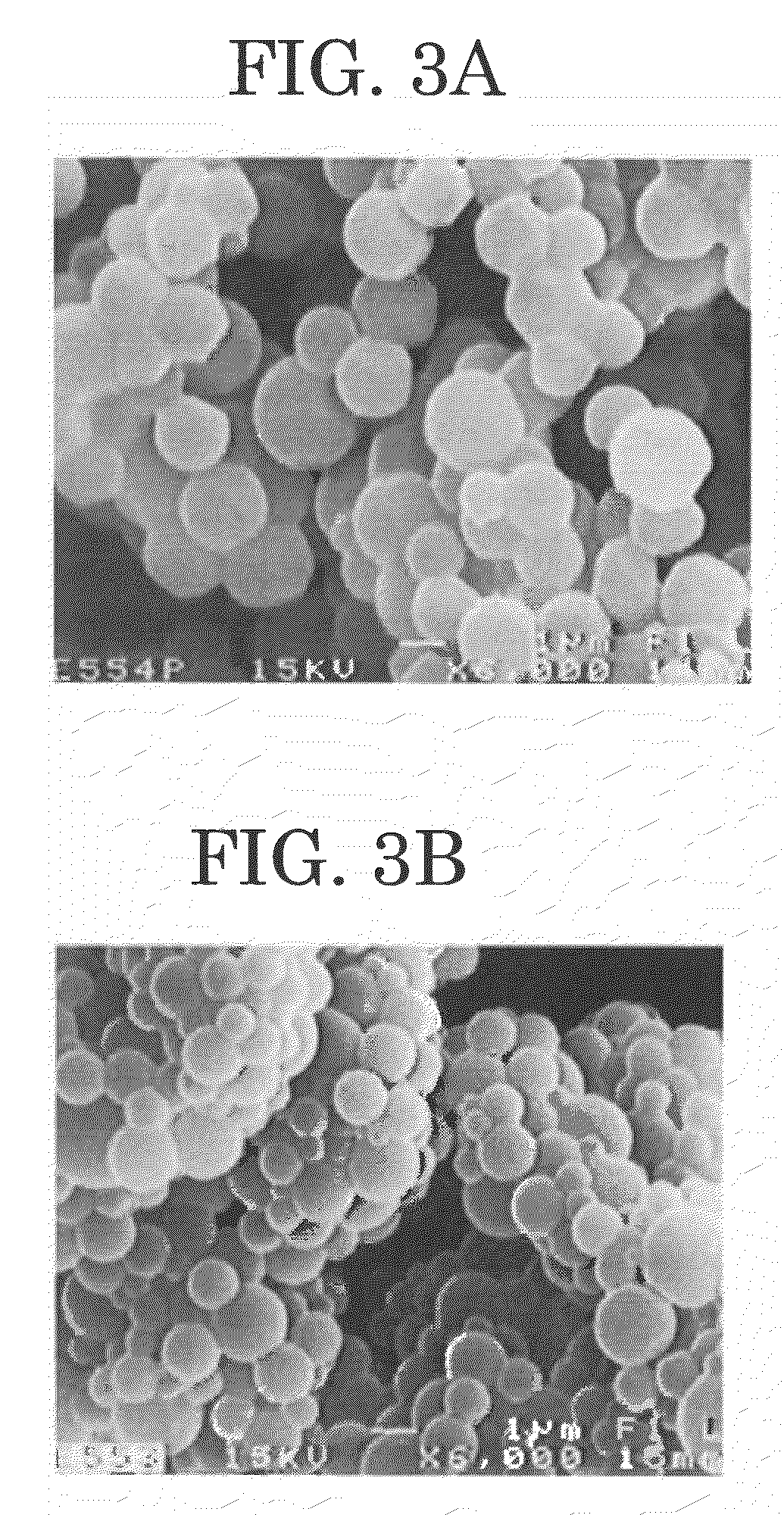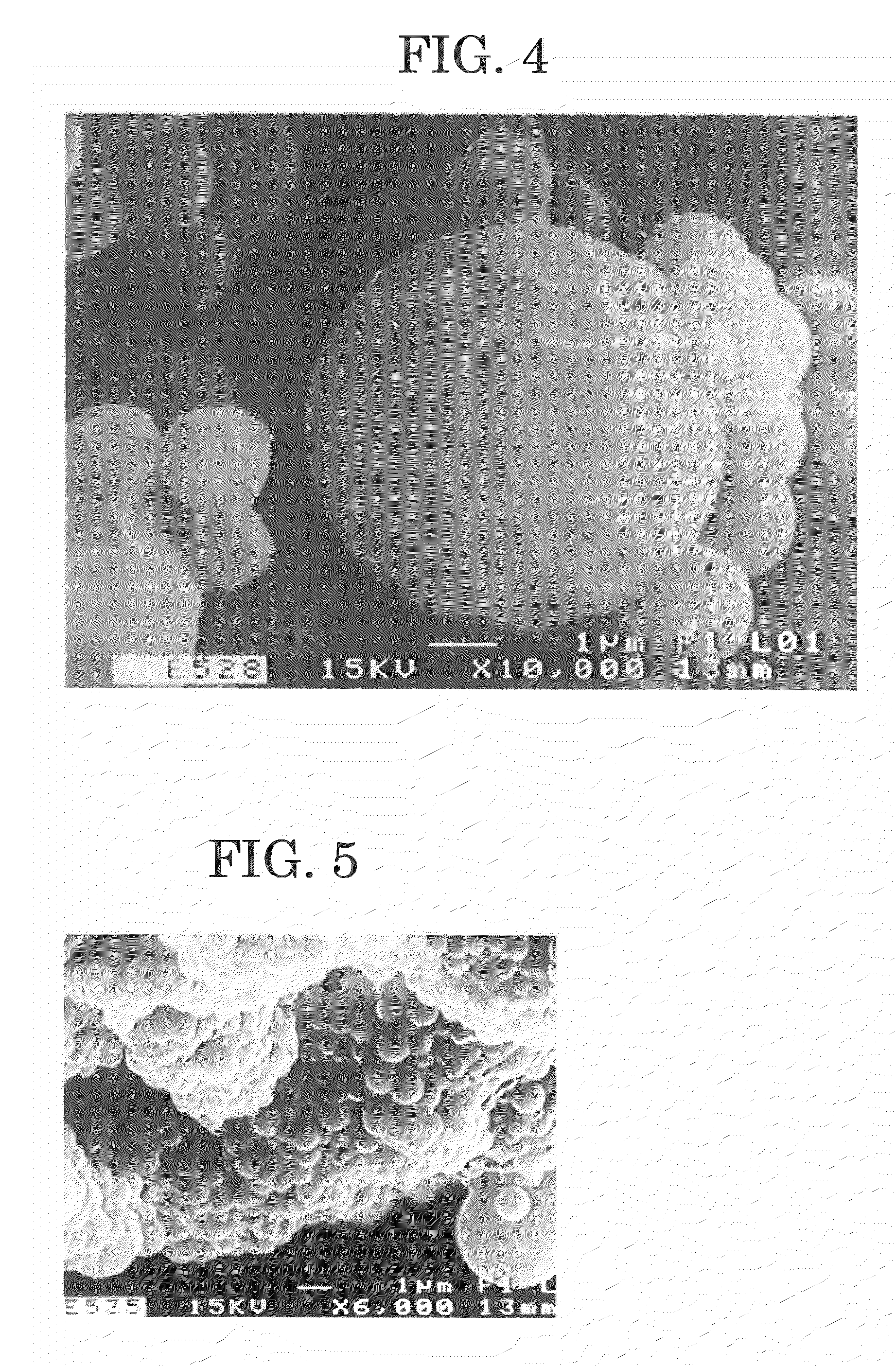Polymer microparticles and production method for the same
a technology of polymer microparticles and production methods, applied in the field of polymer microparticles, can solve the problems of increased production steps, low yield, long lead time, etc., and achieve the effect of low molecular weigh
- Summary
- Abstract
- Description
- Claims
- Application Information
AI Technical Summary
Benefits of technology
Problems solved by technology
Method used
Image
Examples
example 3
[0092]After washing a commercially available 4-chlorostyrene monomer with 5 wt % aqueous sodium hydroxide solution, a radical polymerization inhibitor was removed by reduced-pressure distillation. While stirring the purified 4-chlorostyrene monomer with a stirrer, it was bubbled with nitrogen gas for 15 minutes for oxygen removal therefrom. 2.2 mL of the purified 4-chlorostyrene monomer subjected to deoxidization was then added to a polymer azo-based polymerization initiator (VPS-1001, Wako Pure Chemical Industries, Ltd.) to a concentration of 4 wt %, and stirred at room temperature until the polymer azo-based polymerization initiator was homogenously dispersed. A high-pressure cell with an inner volume of 10 mL was purged with nitrogen gas for removal of oxygen, 0.263M of azobisisobutylonitrile and the above 4-chlorostyrene solution of polymer azo-based polymerization initiator were added in the cell, and the cell was sealed hermetically. Subsequently, carbon dioxide which had been...
example 4
[0093]Polymer particles of Example 4 were prepared as in Example 1 except that the reaction temperature was changed to 55° C. The obtained polymer particles had a number-average molecular weight (Mn) of 16,300, molecular weight distribution (Mw / Mn) of 2.71, particle diameter (Dn) of 1.34 μm, and dispersivity (Dw / Dn) of 2.45.
examples 5 to 7
[0094]Polymer particles of Examples 5 to 7 were respectively prepared as in Example 1 except that the added amount of the polymer azo-based initiator VPS-1001 was changed as shown in Table 1, which also lists the physical properties of the obtained polymer particles.
[0095]
TABLE 1VPS-1001Dn (μm)Dw / DnMnMw / MnEx. 551 mg1.062.6070602.25Ex. 625 mg2.062.3765802.45Ex. 713 mg3.962.8459002.48
PUM
| Property | Measurement | Unit |
|---|---|---|
| temperature | aaaaa | aaaaa |
| particle diameter | aaaaa | aaaaa |
| half-life temperature | aaaaa | aaaaa |
Abstract
Description
Claims
Application Information
 Login to View More
Login to View More - R&D Engineer
- R&D Manager
- IP Professional
- Industry Leading Data Capabilities
- Powerful AI technology
- Patent DNA Extraction
Browse by: Latest US Patents, China's latest patents, Technical Efficacy Thesaurus, Application Domain, Technology Topic, Popular Technical Reports.
© 2024 PatSnap. All rights reserved.Legal|Privacy policy|Modern Slavery Act Transparency Statement|Sitemap|About US| Contact US: help@patsnap.com










